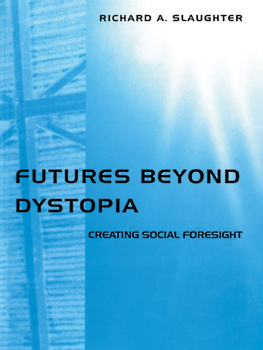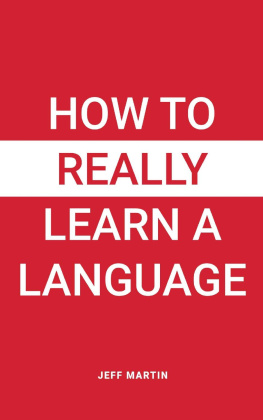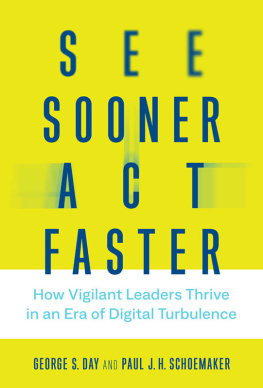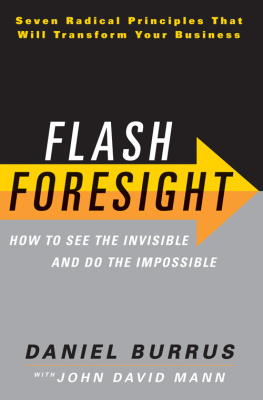Acknowledgments
There is insufficient space here to thank individually all of the people who have contributed in some way to the completion of this work. Indeed, as we know from chaos theory and the so-called butterfly effect, its not possibly to truly even know the full list of those without whom this book would not have happened. To all the butterflies out there who created a tailwind for me: thank you.
As far as named contributors go, the first one on the list can only be Eric Koester, professor at Georgetown University and founder of the Creator Institute. It was Eric who first asked me: Have you ever thought about writing a book? His quest to democratize book publishing, when he could no doubt be doing many other far more lucrative things with his time, serves as a continued inspiration.
The entire team at New Degree Press deserves the highest of kudos for their professionalism, patience, and support. That begins with Brian Bies, who has been solid as a rock throughout various twists and turns of this process. Margaret Danko is everything you could want in a developmental editor, a true creative advisor with the keenest of critical eyes. Ryan Porter is a master of organization and has guided me throughout the manuscript revision process with good humor and a steady dose of good advice.
My deep thanks as well to NDPs Linda Berardelli, Amanda Brown, Eldar Huseynov, Grzegorz Laszczyk, Stefan Mancesvki, and Gjorgji Pejkovski.
Rob Kimmer of Mei & Mark LLP was generous with his sage counsel and expert perspective.
Thank you to those who provided feedback on draft content, including Casey Green, John Kenchelian, Emily Liner, Maricruz Luna, and Robert Thomas.
A special thank you to Andrew Kim for undertaking some Korean language research for me as I tried to pin down the foresight exploits of Herman Kahn in the Republic of Korea.
Paul Campbell, Matthew LaMagna, and Samantha Monk went above and beyond in providing detailed and insightful comments and guidance at multiple points throughout this process. My debt to you runs deep.
A number of foresight experts generously shared their time and insights with me, providing invaluable input as I shaped and refined my arguments. That starts with Professors Peter Bishop and Andy Hines, my first formal instructors in foresight, who have continued to be wonderful resources time and again.
My sincerest thanks also go to Pupul Bisht, Jonathan Brill, Zan Chandler, Mike Courtney, Madebo Fatunde, Brian David Johnson, Njeri Mwagiru, Natalie Pacheco, Marc Palatucci, Mark Sackler, Cat Tully, Kristel Van der Elst, and Amy Zalman for their thoughtful and far-reaching perspectives.
Writing a book is rarely easy, and ones first book especially so. The added stresses and complications of a pandemic only added to the degree of difficulty. I am grateful to all those whose friendship and encouragement sustained me during this time, including (but by no means limited to) Connor Barrett, Brandon Davis, Aida Faverio, Ali Filipowicz, Chris George, John Hawkes, Claire Hill, Peter and Molly Keszler, Marc Parker, Nathan Robins, Andrew Rumin, Helen Smith, Katie Smith, Kasper Statz, and Corban von Ouhl.
I was lucky to be able to draw on wisdom and support throughout the process from a number of other authors, most notably Anne Mary Ciminelli, Tiffany Mosher, and Anjana Sreedhar. My thanks to you all.
Finally, there can be no greater advantage in life than loving and supportive parents. I have been incredibly fortunate in this regard, and there can be little doubt that my passion for reading, research, and writing comes from Alla Pavlovna Zakharova and Larry Eugene Holmes.
All errors, omissions, oversights, paths not taken, and the like are, of course, entirely my own.
Introduction
Inventors, reformers, disruptors, and innovators of all stripes spend countless hours trying to get inside the minds of their audience. They pore over evidence, from oceans of big data to one-on-one interviews, in hopes of understanding what their customers and stakeholders need, how they want to satisfy those needs, and how much theyre willing to give up in exchange. The failure rate is high, but the rewards are considerable.
What if your target audience doesnt exist yet?
What if no one can tell you what they want from this thing youre trying to build because theyve never seen anything like it?
What if they dont know they want it, or what price is right, and they wont for quite some time?
More broadly, what if things that will prove critical to your organizations survival, things that require action right now, cannot yet be understood by any of your organizations usual diagnostic tools?
This was the challenge facing Brian David Johnsonor BDJ, as he often calls himselfat Intel in 2005 as he worked out what should go into the CE3100. The CE3100 had all the computing power of a laptop or desktop shrunk into a single microchip. The goal of this particular chip was to be the brains behind the first generation of smart TVscomputer/TV hybrids that would put Intel at the top of yet another part of the booming consumer electronics market.
The problem was that in 2005, Smart TVs were still several years away. The people who would watch them had no frame of reference for judging what features would make or break the product. How, then, would Intel know what to prioritize in its specifications? What was critical, what was a nice to have, and what was the wrong thing altogether?
One piece that turned out to be critical was the graphics chip, the component that determined what actually showed up on the screen. The team building out the CE3100 had a choice to make: which of the 2D and 3D graphics modules then in the pipeline should they go with? The visual effects on computer monitors and most other consumer electronics back then werent much to look at by todays standards, but there was no shortage of options, from top of the line to bargain basement.
Enter BDJ. Still in the early days of what would become a fourteen-year career at Intelthe last seven as its first-ever chief futuristhe brought a different perspective than most.
People spend a lot of time thinking about the next big thing, he says. Usually this is some new technology that will come along and change the entire industry and world as we know it.
By contrast, BDJ took a longer view. As I started reading up on what he had to say on the topic, I came across the following quote: If you want to spend some time thinking about the future, Id recommend thinking about what comes after the next big thing.
I knew right then I had to hear more.
Systematic Thinking about the Futures









